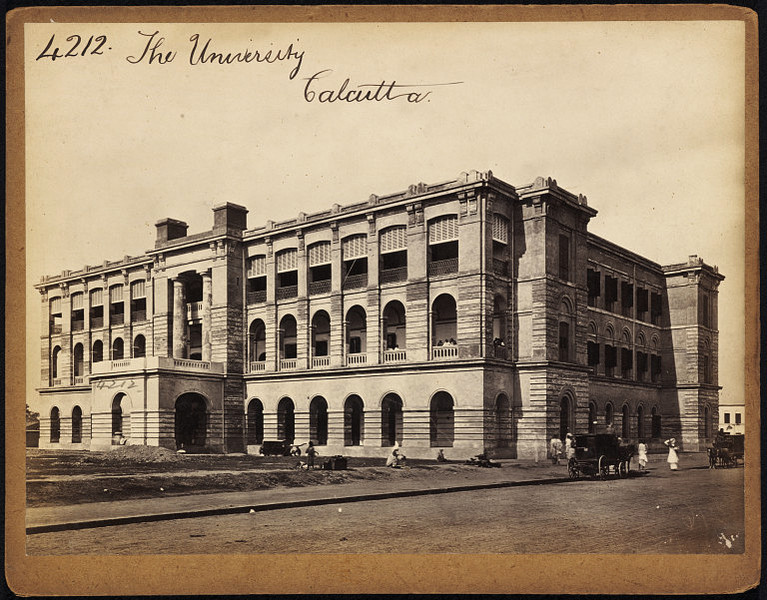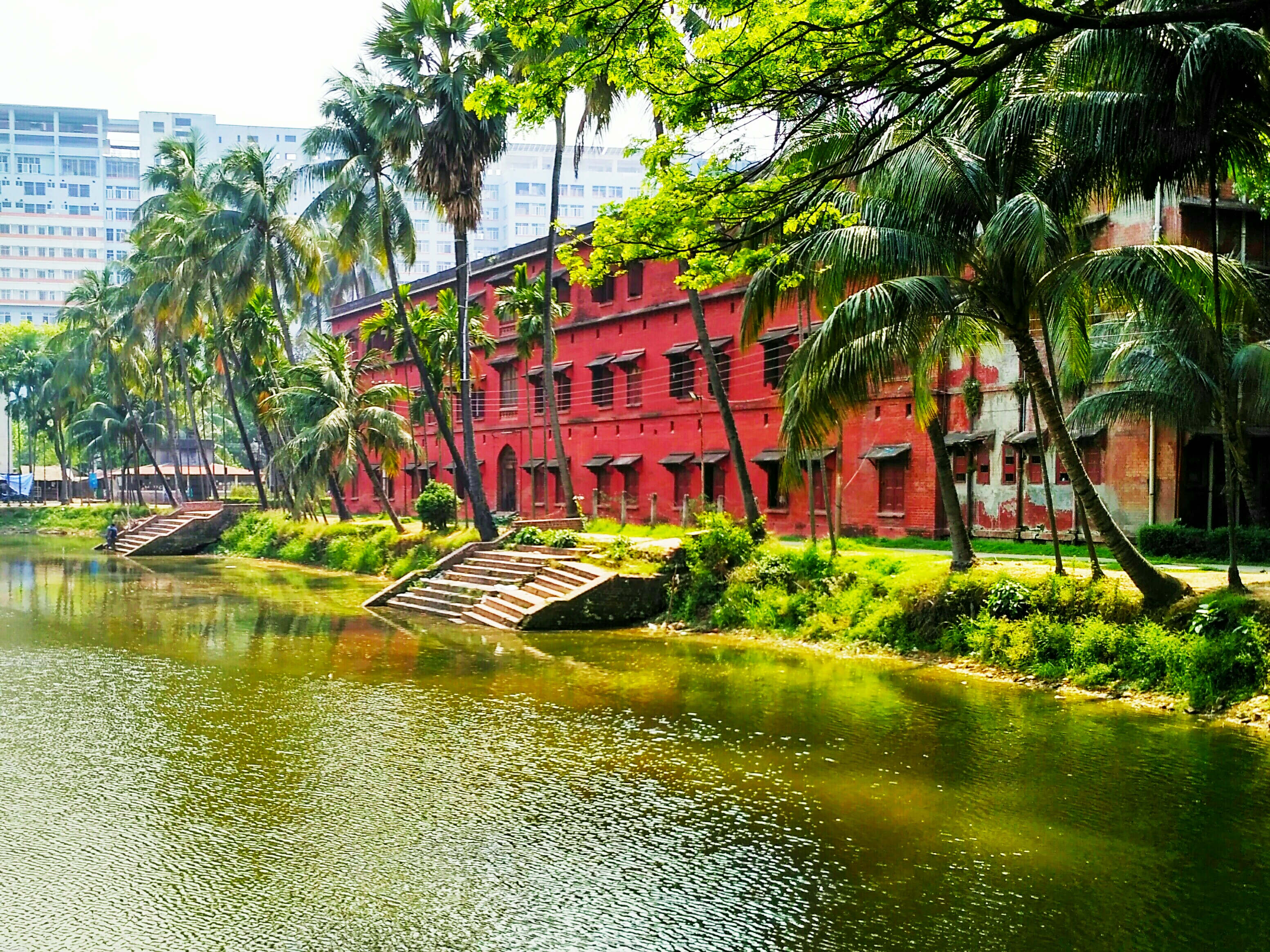|
Salimullah Muslim Hall
Salimullah Muslim Hall is a residential hall at Dhaka University, named after Nawab Sir Khwaja Salimullah Bahadur. It was inaugurated on 11 August 1931. Among the residential halls of Dhaka University, Salimullah Muslim Hall holds a special status due to its heritage. History On 27 May 1912, the British government formed the "Nathan Committee" on establishing a residential hall-based university. The Calcutta University Commission recommended a hall for the Muslim students in order to maintain their own culture and religion. Based on the Nathan Committee's report and the recommendation of the Calcutta University commission, the government of India prepared the Dhaka University bill. The bill was passed by the Indian Law Assembly with the viceroy and governor general Lord Reading agreeing to the bill on 23 March 1920. The university began enrolling students on 10 July 1921. Dhaka University began with three halls: the Muslim Hall (Salimullah Muslim Hall), Jagannath Hall, and Dha ... [...More Info...] [...Related Items...] OR: [Wikipedia] [Google] [Baidu] |
Khwaja Salimullah
Nawab Sir Khwaja Salimullah Bahadur (7 June 1871 – 16 January 1915) was the fourth Nawab of Dhaka and one of the leading Muslim politicians during the British rule in India. In 1906, the Muslim League was officially founded at the educational conference held in Dhaka. The convention was held at Ahsan Manzil, the official residence of the Dhaka Nawab Family. Sir Salimullah was a key patron of education for the Eastern Bengal. He was one of the founders of the University of Dhaka and the prestigious Ahsanullah School of Engineering (now the Bangladesh University of Engineering and Technology). Sir Salimullah was a staunch supporter of the Partition of Bengal and was a member of East Bengal and Assam Legislative Council from 1906 to 1907. He was also a member of Bengal Legislative Assembly from 1913 till his death in Calcutta in 1915 at the age of 43. He was the founder President of Bengal Muslim League in 1907. Politics Salimullah began his career in government service in 189 ... [...More Info...] [...Related Items...] OR: [Wikipedia] [Google] [Baidu] |
Bangladesh
Bangladesh (}, ), officially the People's Republic of Bangladesh, is a country in South Asia. It is the eighth-most populous country in the world, with a population exceeding 165 million people in an area of . Bangladesh is among the most densely populated countries in the world, and shares land borders with India to the west, north, and east, and Myanmar to the southeast; to the south it has a coastline along the Bay of Bengal. It is narrowly separated from Bhutan and Nepal by the Siliguri Corridor; and from China by the Indian state of Sikkim in the north. Dhaka, the capital and largest city, is the nation's political, financial and cultural centre. Chittagong, the second-largest city, is the busiest port on the Bay of Bengal. The official language is Bengali, one of the easternmost branches of the Indo-European language family. Bangladesh forms the sovereign part of the historic and ethnolinguistic region of Bengal, which was divided during the Partition of India in ... [...More Info...] [...Related Items...] OR: [Wikipedia] [Google] [Baidu] |
Dhaka University
The University of Dhaka (also known as Dhaka University, or DU) is a public research university located in Dhaka, Bangladesh. It is the oldest university in Bangladesh. The university opened its doors to students on July 1st 1921. Currently it is the largest public research university in Bangladesh, with a student body of 46,150 and a faculty of 1,992. Nawab Bahadur Sir Khwaja Salimullah, who played a pioneering role in establishing the university in Dhaka, donated 600 acres of land from his estate for this purpose. It has made significant contributions to the modern history of Bangladesh. After the Partition of India, it became the focal point of progressive and democratic movements in Pakistan. Its students and teachers played a central role in the rise of Bengali nationalism and the independence of Bangladesh in 1971. Notable alumni include Muhammad Yunus (winner 2006 Nobel Peace Prize, pioneer of microcredit), Natyaguru Nurul Momen (pioneer literature, theatre & cu ... [...More Info...] [...Related Items...] OR: [Wikipedia] [Google] [Baidu] |
Calcutta University
The University of Calcutta (informally known as Calcutta University; CU) is a public collegiate state university in India, located in Kolkata, West Bengal, India. Considered one of best state research university all over India every year, CU has topped among India's best universities several times. It has 151 affiliated undergraduate colleges and 16 institutes in Kolkata and nearby areas. It was established on 24 January 1857 and is the oldest multidisciplinary and European-style institution in Asia. Today, the university's jurisdiction is limited to a few districts of West Bengal, but at the time of establishment it had a catchment area, ranging from Lahore to Myanmar. Within India, it is recognized as a "Five-Star University" and accredited an "A+" grade by the National Assessment and Accreditation Council (NAAC). The University of Calcutta was awarded the status of "Centre with Potential for Excellence in Particular Area" and "University with potential for excellence" by t ... [...More Info...] [...Related Items...] OR: [Wikipedia] [Google] [Baidu] |
Jagannath Hall
Jagannath Hall of Dhaka University is a residence hall for minority students, Hindu, Buddhist, Christian, and others. It is one of the three original residence halls that date from when the University was founded in 1921, and like them is modelled on the colleges of the University of Oxford, a complex of buildings including residences, meeting rooms, dining rooms, a prayer hall, gardens, and sporting facilities. Of the approximately 2000 students of the hall, half live in the residences, and half are non-residential students affiliated with the college. Several professors at the university hold the positions of house tutors and provost at the hall. The hall includes four residential buildings: * Govinda Chandra Dev building * Sontosh Chandra Bhattacharya Bhavan (New Building) * October Memorial Building (October Smiriti Bhaban) * Jyotirmoy Guhathakurta building History Kisorilal Roy Chowdhury, the Zamindar of Baliati in Saturia, Manikganj, who had previously established Jagann ... [...More Info...] [...Related Items...] OR: [Wikipedia] [Google] [Baidu] |
Shahidullah Hall
Dr. Muhammad Shahidullah Hall is one of the three founding residential halls of the University of Dhaka. Established in 1921 as Lyton Hall it was subsequently renamed Dhaka Hall and renamed again for the famous linguist Dr. Muhammad Shahidullah following his death in 1969. It is located behind Curzon Hall The Curzon Hall is a British Raj-era building and home of the Faculty of Sciences at the University of Dhaka. The building was originally intended to be a town hall and is named after Lord Curzon, the Viceroy of India who laid its foundation st ... and has a main building accommodation with two extensions. Only science faculty students are accommodated here. Dr. Shahidullah is buried within the grounds. Layout and facilities The hall complex covers with three major student residences housing about 1500 students. The three-story ''main building'' was founded in 1921 with two later five-story additions (''extension-1'' or ''Ex-1'' and ''extension-2'' or ''Ex-2''). Other bui ... [...More Info...] [...Related Items...] OR: [Wikipedia] [Google] [Baidu] |
SALIMULLAH MUSLIM HALL
Salimullah Muslim Hall is a residential hall at Dhaka University, named after Nawab Sir Khwaja Salimullah Bahadur. It was inaugurated on 11 August 1931. Among the residential halls of Dhaka University, Salimullah Muslim Hall holds a special status due to its heritage. History On 27 May 1912, the British government formed the "Nathan Committee" on establishing a residential hall-based university. The Calcutta University Commission recommended a hall for the Muslim students in order to maintain their own culture and religion. Based on the Nathan Committee's report and the recommendation of the Calcutta University commission, the government of India prepared the Dhaka University bill. The bill was passed by the Indian Law Assembly with the viceroy and governor general Lord Reading agreeing to the bill on 23 March 1920. The university began enrolling students on 10 July 1921. Dhaka University began with three halls: the Muslim Hall (Salimullah Muslim Hall), Jagannath Hall, and Dha ... [...More Info...] [...Related Items...] OR: [Wikipedia] [Google] [Baidu] |
University Of Dhaka Halls Of Residence
A university () is an institution of higher (or tertiary) education and research which awards academic degrees in several academic disciplines. Universities typically offer both undergraduate and postgraduate programs. In the United States, the designation is reserved for colleges that have a graduate school. The word ''university'' is derived from the Latin ''universitas magistrorum et scholarium'', which roughly means "community of teachers and scholars". The first universities were created in Europe by Catholic Church monks. The University of Bologna (''Università di Bologna''), founded in 1088, is the first university in the sense of: *Being a high degree-awarding institute. *Having independence from the ecclesiastic schools, although conducted by both clergy and non-clergy. *Using the word ''universitas'' (which was coined at its foundation). *Issuing secular and non-secular degrees: grammar, rhetoric, logic, theology, canon law, notarial law.Hunt Janin: "The university in ... [...More Info...] [...Related Items...] OR: [Wikipedia] [Google] [Baidu] |





